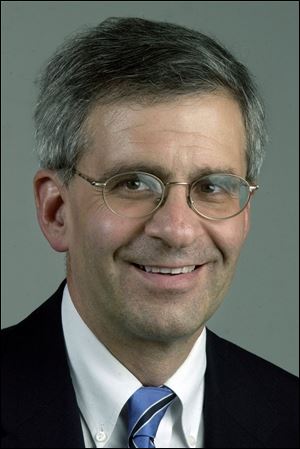
COMMENTARY
Supreme Court steers politics back to pre-Watergate era
4/6/2014
Shribman
With its members holding lifetime tenure and sheltered from elections and polls, the U.S. Supreme Court has the capacity to structure the politics of the other two branches. It did so in 2000, when it settled the electoral standoff between Al Gore and George W. Bush.
It did so in 2010, when it permitted corporations and nonprofit political organizations to make unlimited “independent expenditures.” And it did so again last week.
This latest decision, which threw out a $123,200 limit on contributions to federal candidates and political parties over a two-year election cycle, threw American politics into upheaval and altered the landscape for this fall’s elections.
The decision buttressed two important trends. It chipped away at campaign-finance laws that since the mid-1970s had sought to restrict the influence of big money on American political campaigns. And it affirmed the notion that political contributions are a form of speech protected by the First Amendment.
Both of these developments have shaped American politics in recent years. Though they were embraced with new vigor by special-interest groups and deplored with new outrage by activists seeking to limit the effect of money on politics, they in effect return American politics to pre-Watergate contours.
More specifically, the ruling may help the established political parties, traditionally the source of the money that California politician Jesse Unruh described as the mother’s milk of politics. In recent years, the two major parties had watched helplessly as streams of political money flowed to outside groups.
But the partial reversal of this trend almost certainly will return American politics to a shape more familiar to readers of textbooks than to readers of newspapers and Web sites. That world is a politics of a nearly unfettered flow of money into the major parties, accompanied by a nearly unfettered influence on politics of the lobbyists who are instruments of big money.
In pre-20th century terms, this means the likely re-emergence of party-aligned power brokers such as Mark Hanna of Ohio, who bankrolled President William McKinley (in office from 1897 to 1901) and also served himself in the Senate (1897-1904). In more modern terms, it means the sustained power of organized labor over Democratic politicians and of large business groups such as the Chamber of Commerce over Republicans.
This decision prompted the predictable hails and horrors from the predictable corners of American civic and political life. Its effects are impossible to predict.
That said, some changes are almost inevitable. There likely will be a new Niagara of money flowing into this year’s 36 gubernatorial races, accounting for nearly two-thirds of the states. Money will flood into the 435 U.S. House races too, as well as the 33 Senate races that now loom so important for the final two years of President Obama’s term.
One of the campaign-finance caps that remains — the ban on giving more than $5,200 to a single candidate during the two-year election cycle — is almost meaningless on a national scale. Now, big donors can direct their contributions to all candidates coast to coast or contribute to the national parties, permitting the parties to distribute the money where it would be most effective. That could trump the influence of an individual donor on a campaign, as it would permit party strategists in Washington to concentrate money where its impact can be greatest.
This is not to say that big money and big power don’t rule the capital already. Many analysts believe their influence is greater than ever, reinforced not only by the decision four years ago, but also by the astonishing growth of wealth at the upper-income levels of American life and by the new fund-raising tools created by the Internet.
This is one reason the established parties don’t rule Washington the way they once did: ruthlessly, remorselessly, relentlessly.
Though the major parties have been recast in the past quarter century by money, though both have become more ideologically aligned, and though both have become more ideologically rigid, both have in some senses become less powerful. While their ability to stymie their rivals seems unlimited and their inclination to slime their opponents seems inexhaustible, they have been eclipsed by independent groups.
With more money and thus more power available to the parties, it is possible that groups such as the Tea Party could find their influence undermined by the very party establishments that their money and candidates are trying to change.
Nobody can accurately predict how this Supreme Court decision will reconfigure American politics, just as no one thought the post-Watergate laws would create political-action committees that would come to dominate politics.
Supreme Court decisions sometimes are like rafts on a river. You think they are drifting in one direction — and then ripples and rapids change their course entirely.
David Shribman is executive editor of the Pittsburgh Post-Gazette.
Contact him at:dshribman@post-gazette.com